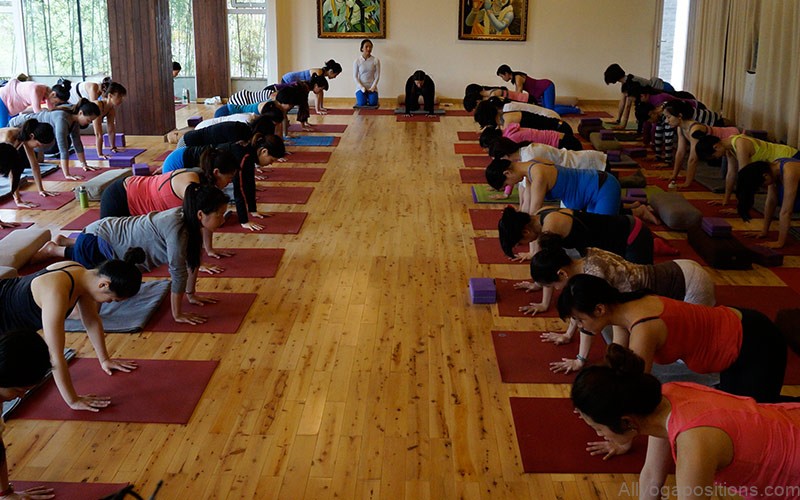Fainting: Fainting should not be taken lightly; there are a few reasons pregnant women faint, among them are, dehydration (which can also cause contractions), hypoglycemia, and circulatory problems. Women who faint might not be getting enough oxygen to their brains which effects the amount of oxygen the baby is getting as well. Have her call her doctor or health care provider immediately or go to the emergency room.
Heart Palpitations: When doing any prenatal activity, a woman should be able to breathe normally and be able to have a normal conversation while exercising. If she is out of breath or sweating profusely she is working too hard and needs to stop and rest. She needs to call her health care provider if heart is racing and doesn’t stop after a few minutes of rest.
Prenatal Vinyasa Flow Photo Gallery
Dizziness: Dizziness paired with headache, blurred vision or heart palpitations should be immediately reported to a health care provider. If a woman has dizziness alone, have her stop activity and see if it goes away. Always alert a health care provider with any medical conditions that arise.
Heartburn: Heartburn can be exacerbated by any inversions even if only held a short period of time. If a woman has heartburn she should avoid downward dog or any other inversion or semi inversion. If she develops heartburn during a class she should discontinue inversions. Blurred Vision: Blurred vision can be a sign of dehydration or preeclampsia. Have the woman call her health care provider immediately if her eyesight is in any way effected while exercising.
Preeclampsia: is a condition that is diagnosed when a woman has elevated blood pressure and protein in her urine. Symptoms can include, headaches, blurred vision, swelling of hands and feet, high blood pressure and protein in the urine. It can be very dangerous; if not treated it can lead to Eclampsia (seizure) and this can lead to coma, or maternal or fetal death.
Sharp pain in abdomen or chest: This could be just the ligaments of the uterus stretching but it could also be contractions. Braxton-Hicks contractions versus “labor” contractions: Braxton-Hicks contractions are like practice contractions for the uterus. They might be felt as early as 5 months or a woman might not feel them ever.
They do not typically make any changes to the cervix or lead to labor. These contractions are typically felt high in the abdomen or all over the belly. If a woman experiences more than 10 of these in an hour she should call her doctor. Labor Contractions: Labor contractions start out feeling more like menstrual cramps. They typically occur low and deep in the abdomen, they will come and go rhythmically.










